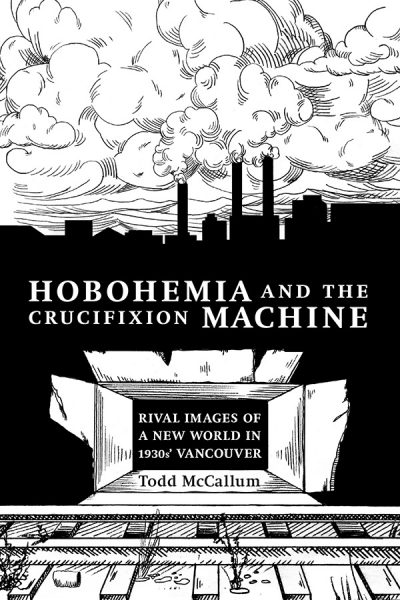Social Democracy After the Cold War
edited by Bryan Evans and Ingo Schmidt

Subjects: Canadian History, History, Labour, Political History, Political Science, Political Theory
Series: Fabriks: Studies in the Working Class
Imprint: AU Press
In the early years of the Great Depression, thousands of unemployed homeless transients settled into Vancouver’s “hobo jungle.” The jungle operated as a distinct community, in which goods were exchanged and shared directly, without benefit of currency. The organization of life was immediate and consensual, conducted in the absence of capital accumulation. But as the transients moved from the jungles to the city, they made innumerable demands on Vancouver’s Relief Department, consuming financial resources at a rate that threatened the city with bankruptcy. In response, the municipality instituted a card-control system—no longer offering relief recipients currency to do with as they chose. It also implemented new investigative and assessment procedures, including office spies, to weed out organizational inefficiencies. McCallum argues that, threatened by this “ungovernable society,” Vancouver’s Relief Department employed Fordist management methods that ultimately stripped the transients of their individuality.
Vancouver’s municipal government entered into contractual relationships with dozens of private businesses, tendering bids for meals in much the same fashion as for printing jobs and construction projects. As a result, entrepreneurs clamoured to get their share of the state spending. With the emergence of work relief camps, the provincial government harnessed the only currency that homeless men possessed: their muscle. This new form of unfree labour aided the province in developing its tourist driven “image” economy, as well as facilitating the transportation of natural resources and manufactured goods. It also led eventually to the most significant protest movement of 1930s’ Canada, the On-to-Ottawa Trek. Hobohemia and the Crucifixion Machine explores the connections between the history of transiency and that of Fordism, offering a new interpretation of the economic and political crises that wracked Canada in the early years of the Great Depression.
The respectful way in which McCallum approaches the literature is entirely laudable. Too many scholarly works begin from the premise that everything that has gone before needs to be exposed as fundamentally wrong, a task that is crowned by a new, revised interpretation that finally sets the record straight. McCallum presents an alternative viewpoint rather than a cagematch. […] This book contains challenging ideas built on superb archival research; it offers up fresh perspectives and it contains a historical tale worth reading.
BC Studies: The British Columbian Quarterly
… offers a new way interpreting shifts in relief policy for scholars of the Depression. Yet, it is McCallum’s theoretical arguments that stand out. Historians may prove reluctant in adopting ‘indivisible analytic totality’ like McCallum. Nonetheless, it provides a new and interesting way of incorporating Foucault and Adorno into social history analyses.
Labour/Le Travail
This work is licensed under a Creative Commons License (CC BY-NC-ND 4.0). It may be reproduced for non-commercial purposes, provided that the original author is credited.